There are many resources online to give you tips to achieve better lip syncing, the best way to get the best results is to simply research yourself. The videoes below will help you gain some quick tips, but there are no shortcuts to mastering lip syncing beyond practice.
https://www.youtube.com/watch?v=Gfw5BJi0RFw
https://www.youtube.com/watch?v=tMWiYIVoDis
--- Taking video of talking can allow you to perfectly mimic the mouth, similarly to rotoscoping.
1. Take video or either dialouge your characters say or to simply, common words.
2. Screen shot the moments of pronunciation of a word.
Use these as reference. A mirror handy at the studio can also help with on the fly animation drawing.
Have a code of mouth sounds to refer back to is also handy.
- Lip Syncing Tutorials
- Round class check in
- Studio Time
Tuesday, March 28, 2017
Wednesday, March 22, 2017
The Long Road Home
Congratulations, class! If you've been keeping up with class, you have all now successfully made your first "animatics". One could make an argument that this is the hardest part. One can go the distance, slaving away at an animation, but if the animatic isn't strong, if it's confusing, if specific movements and storytelling ques aren't addressed, it can be all for nothing.
We've reached the fun part. Actual animating! Drawing lots and lots and lots and lots of little pictures.
There is a little over a month left of school and we will be working in groups of 3 or 4 to finish 1 of the animatic.
1) Final showing of animatics. 8 - 8:20
2) Vote for best animatics
3) make groups based upon animatics
4) demonstration about animation philosophy; speed vs. accuracy and how much you can get away with in terms of inconsistency.
5) . Discuss within your group who will do what.
6) Lip Sync exercise: Videotape dialogue from the chosen animatic. Do drawings of a sentence to practice.
We've reached the fun part. Actual animating! Drawing lots and lots and lots and lots of little pictures.
There is a little over a month left of school and we will be working in groups of 3 or 4 to finish 1 of the animatic.
1) Final showing of animatics. 8 - 8:20
2) Vote for best animatics
3) make groups based upon animatics
4) demonstration about animation philosophy; speed vs. accuracy and how much you can get away with in terms of inconsistency.
5) . Discuss within your group who will do what.
6) Lip Sync exercise: Videotape dialogue from the chosen animatic. Do drawings of a sentence to practice.
Sunday, March 5, 2017
Adapting your storyboard to sounds; Return emphasis to background & Hitchcock Rule
Mission Hill Animatic Episode -
https://www.youtube.com/watch?v=6T1t87wbnKQ
As we discussed earlier, having your 30 second animatics have internal logic is vital for grasping the attention of your audience. It is an element that can transcend an animation to the realm of an experience, as it gives off the effect of witnessing a separate reality. Consistency to the worlds created, specific details and even visual tangents are what separates derivative work from original work. It gives you, the creators, a never ending well of resources and paths to go down.
If you're beating yourself over the head as to where a story must go, perhaps 30 seconds of animatic has passed by simply pausing and observing the worlds you have created. Establishing shots, often more rendered and painterly, is a trope within narration that is highly anticipated and beloved by fans of animation art collectors.
As a result, we will be talking about background painting today.


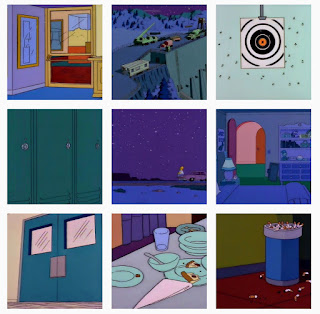
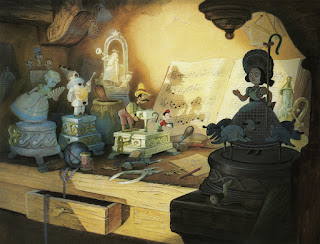
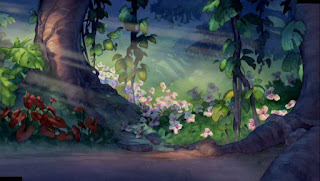
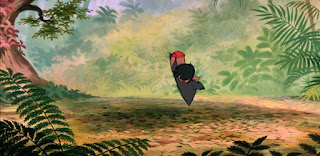
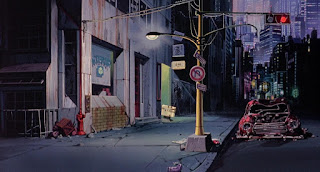
Suggested scale: relative to 1080 x 1920 - 6.4 inches by 3.6 inches
Hitchcock Rule: "The Size of Any Object in Your Frame Should Be Proportional To Its Importance to the story at that moment".
https://www.youtube.com/watch?v=jCf1a7ApKhQ
More References:
http://nofilmschool.com/2015/11/hitchcock-rule-help-you-tell-better-visual-stories
http://gurneyjourney.blogspot.com/2013/08/hitchcocks-rule.html
https://www.youtube.com/watch?v=6T1t87wbnKQ
As we discussed earlier, having your 30 second animatics have internal logic is vital for grasping the attention of your audience. It is an element that can transcend an animation to the realm of an experience, as it gives off the effect of witnessing a separate reality. Consistency to the worlds created, specific details and even visual tangents are what separates derivative work from original work. It gives you, the creators, a never ending well of resources and paths to go down.
If you're beating yourself over the head as to where a story must go, perhaps 30 seconds of animatic has passed by simply pausing and observing the worlds you have created. Establishing shots, often more rendered and painterly, is a trope within narration that is highly anticipated and beloved by fans of animation art collectors.
As a result, we will be talking about background painting today.







Suggested scale: relative to 1080 x 1920 - 6.4 inches by 3.6 inches
Hitchcock Rule: "The Size of Any Object in Your Frame Should Be Proportional To Its Importance to the story at that moment".
https://www.youtube.com/watch?v=jCf1a7ApKhQ
More References:
http://nofilmschool.com/2015/11/hitchcock-rule-help-you-tell-better-visual-stories
http://gurneyjourney.blogspot.com/2013/08/hitchcocks-rule.html
Subscribe to:
Posts (Atom)